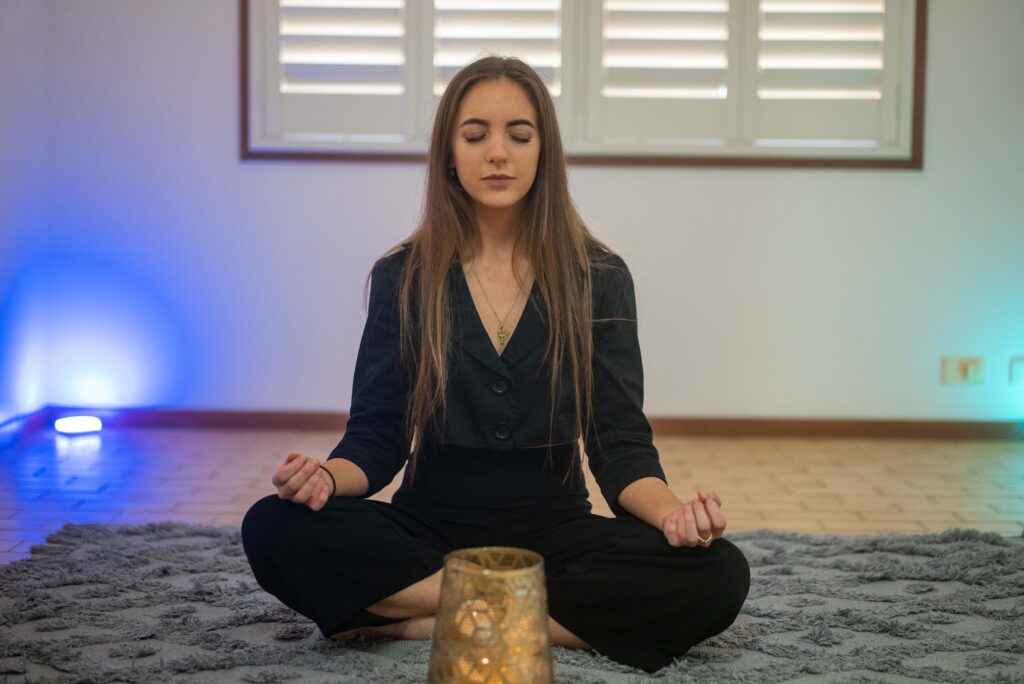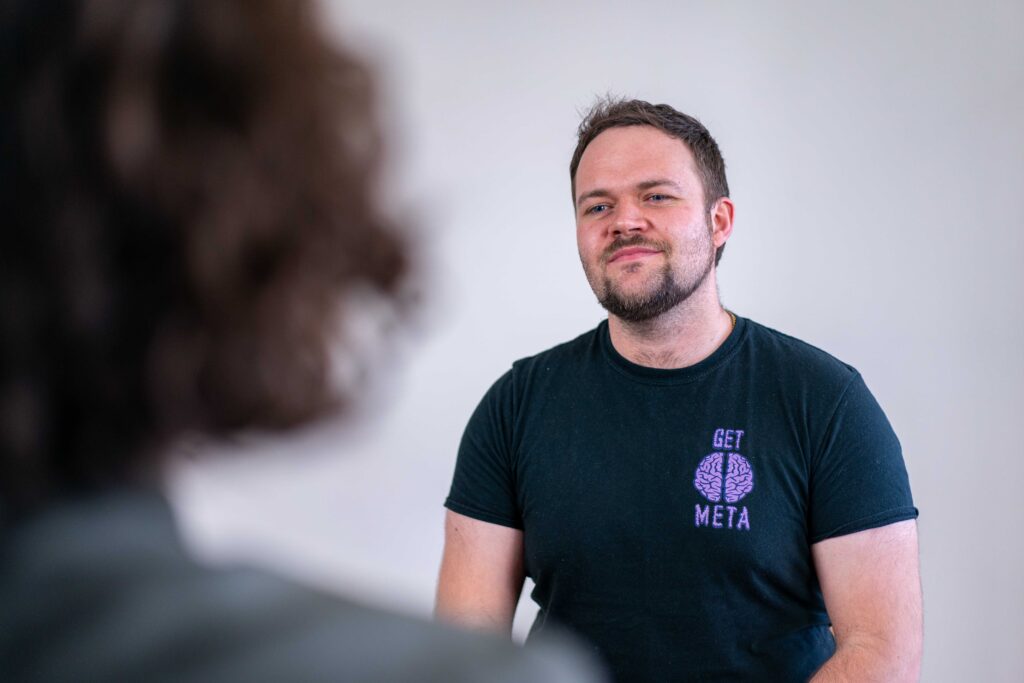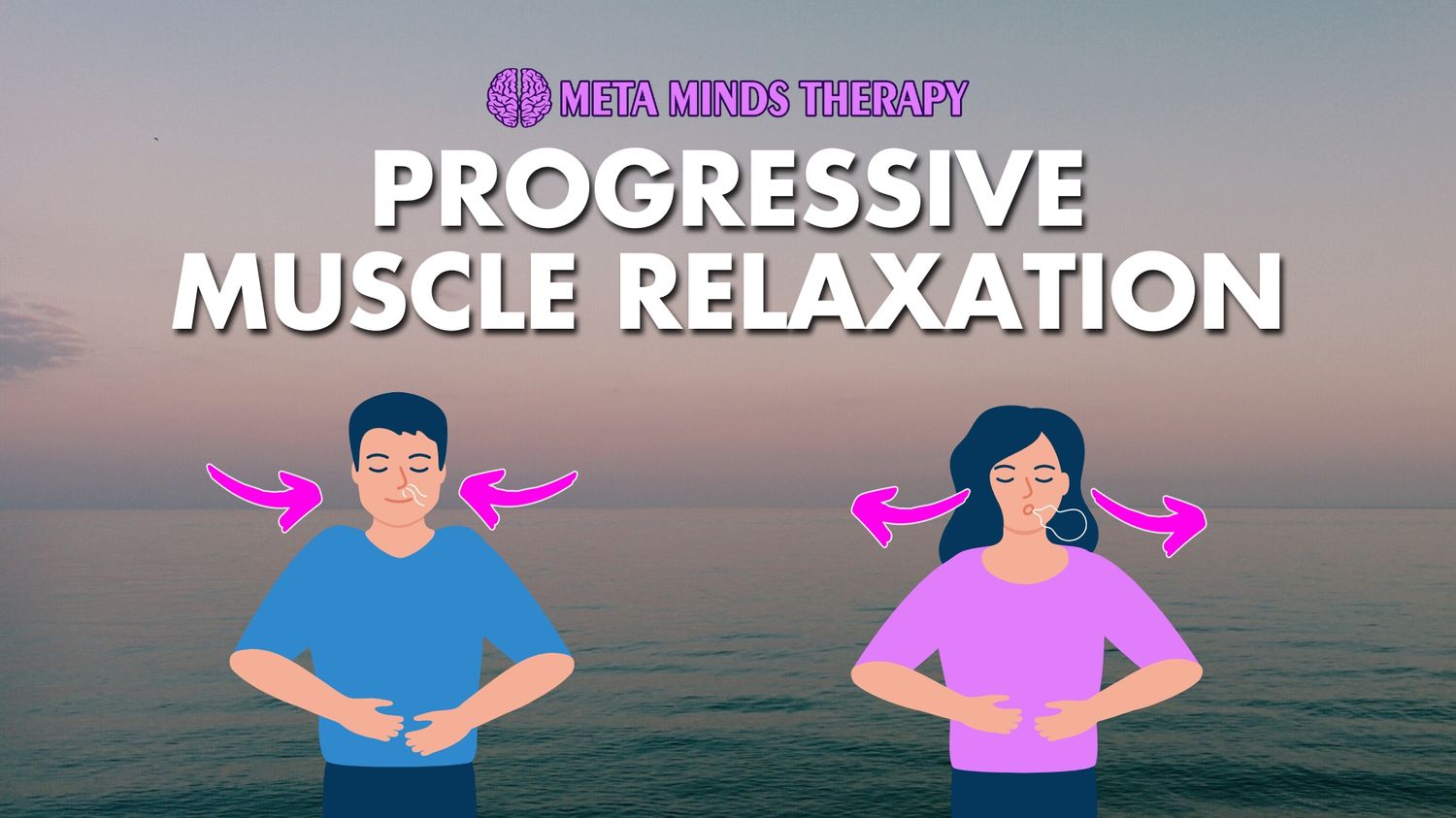In our hectic lives, stress and anxiety often manifest physically, leading to muscle tension that can disrupt our well-being. Progressive Muscle Relaxation (PMR) offers a structured approach to alleviating these effects, promoting relaxation and overall health. Let’s explore how to effectively practice PMR by focusing on different muscle groups throughout the body.
Understanding Muscle Tension and Its Impact
Muscle tension is a natural response to stress and anxiety, preparing our bodies for perceived threats. However, prolonged tension can lead to discomfort such as headaches, backaches, and a general feeling of unease. Recognising and managing muscle tension is crucial for maintaining both physical and mental health.
What is Progressive Muscle Relaxation (PMR)?
PMR is a technique where specific muscle groups are deliberately tensed and then relaxed in a systematic order. This process allows individuals to differentiate between tension and relaxation within their bodies, ultimately teaching them to release tension more effectively.
Watch the guided Progressive Muscle Relaxation on YouTube.
Getting Started with Progressive Muscle Relaxation
Prepare Your Environment
Find a quiet space where you won’t be disturbed. Dim the lights, silence electronic devices, and wear loose, comfortable clothing. This sets the stage for relaxation.
Body Positioning
Sit or lie down in a comfortable position. Ensure your head is supported and remove your shoes for added comfort.
Deep Breathing and Mental Relaxation
Begin by taking slow, deep breaths. Inhale deeply through your nose, hold briefly, and exhale slowly through your mouth. Allow your mind to relax and release any lingering tension.
Progressive Muscle Relaxation Sequence
Follow a structured approach to tensing and relaxing different muscle groups. Here’s a detailed breakdown of how to target each area:
1. Right Hand and Forearm
Make a fist with your right hand. Tighten the muscles in your fingers, hand, and forearm. Hold this tension for a count of five… Four… Three… Two… One… And release. Feel the muscles in your hand and forearm relax completely as you exhale.
2. Right Upper Arm
Bring your right forearm up to your shoulder to “make a muscle”. Feel the tension building in your upper arm… Hold for five seconds… Four… Three… Two… One… And release. Allow your right arm to rest comfortably by your side, noticing the sensation of relaxation spreading through your muscles.
3. Left Hand and Forearm
Make a fist with your left hand, tightening the muscles in your fingers, hand, and forearm… Hold… And release. Feel the tension melting away as you exhale.
4. Left Upper Arm
Bring your left forearm up towards your shoulder, as if you’re flexing your biceps. Feel the tension building in your upper arm… Hold for five seconds… Four… Three… Two… One… And release. Allow your left arm to rest comfortably by your side, noticing the sensation of relaxation spreading through your muscles.
5. Forehead
Raise your eyebrows as high as they will go, as though you were surprised by something. Feel the tension across your forehead and scalp… Hold… And release. Smooth out your forehead and notice the sensation of relaxation spreading through your brow.
6. Eyes and Cheeks
Squeeze your eyes tightly shut. Feel the muscles around your eyes and cheeks tensing… Hold… And release. Allow your facial muscles to soften completely.
7. Mouth and Jaw
Open your mouth as wide as you can, as you might when you’re yawning. Feel the stretch in your jaw muscles… Hold… And release. Let your jaw relax and your mouth return to a comfortable position.
8. Neck
Be careful as you tense these muscles. Face forward and then pull your head back slowly, as though you are looking up to the ceiling. Feel the stretch along your neck muscles… Hold… And release. Allow your neck to return to a neutral position.
9. Shoulders
Tense the muscles in your shoulders as you bring your shoulders up towards your ears. Feel the tension in your shoulder muscles… Hold… And release. Let your shoulders drop naturally.
10. Shoulder Blades/Back
Push your shoulder blades back, trying to almost touch them together, so that your chest is pushed forward. Feel the stretch across your chest and upper back… Hold… And release. Allow your upper body to relax into a comfortable posture.
11. Chest and Stomach
Breathe in deeply, filling up your lungs and chest with air. Hold briefly, feeling your chest and stomach expand… And exhale slowly, releasing all the air. Notice the relaxation spreading through your chest and abdomen.
12. Hips and Buttocks
Squeeze your buttock muscles tightly. Feel the tension in your hips and buttocks… Hold… And release. Let your lower body relax completely.
13. Right Upper Leg
Tighten your right thigh by pressing your knee down towards the ground. Feel the muscles in your right thigh tensing… Hold… And release. Allow your leg to rest comfortably.
14. Right Lower Leg
Do this slowly and carefully to avoid cramps. Pull your toes towards you to stretch the calf muscle. Feel the stretch along your right calf… Hold… And release. Let your right leg relax completely.
15. Right Foot
Curl your toes downwards, feeling the stretch in your right foot. Hold this position… And release. Feel the tension melting away from your right foot.
16. Left Upper Leg
Repeat as for the right upper leg. Tighten your left thigh by pressing your knee down towards the ground… Hold… And release. Feel the muscles in your left thigh relaxing.
17. Left Lower Leg
Repeat as for the right lower leg. Pull your toes towards you to stretch the calf muscle in your left leg… Hold… And release. Feel the tension dissipating from your left calf.
18. Left Foot
Repeat as for the right foot. Curl your toes downwards in your left foot… Hold… And release. Let your left foot relax completely.

Practice and Consistency
Aim for daily practice sessions of about 15-20 minutes. With regular practice, you’ll become more adept at recognising tension in your body and effectively releasing it.
Benefits of Progressive Muscle Relaxation
- Stress Reduction: PMR helps lower cortisol levels, promoting a sense of calm and relaxation.
- Improved Sleep: Relaxing tense muscles before bedtime can lead to better quality sleep.
- Pain Relief: Alleviates muscle aches and tension headaches associated with chronic stress.
- Enhanced Mind-Body Awareness: PMR cultivates mindfulness of bodily sensations, empowering individuals to manage stress more effectively.
Conclusion
Progressive Muscle Relaxation is a valuable tool for managing stress and enhancing overall well-being. By systematically engaging and releasing tension from different muscle groups, you can promote relaxation and develop a deeper connection with your body’s responses to stress. Start incorporating PMR into your daily routine and experience the transformative benefits it offers for a healthier, more balanced life. Remember, relaxation is a skill that improves with practice—commit to your well-being and embrace the journey towards greater calm and resilience.
Through Progressive Muscle Relaxation, you empower yourself to proactively manage stress and nurture a harmonious relationship between body and mind. Start your journey today and discover the profound impact of relaxation on your health and happiness.

Meta Minds Therapy offers convenient counselling on your terms, including online and after-hours visits. As a result, your therapy can be tailored to meet your needs. From the comfort of your own home, master your mindset!
Book a counselling session with Dan, or contact him via email at: dan@metamindstherapy.com for more information.


